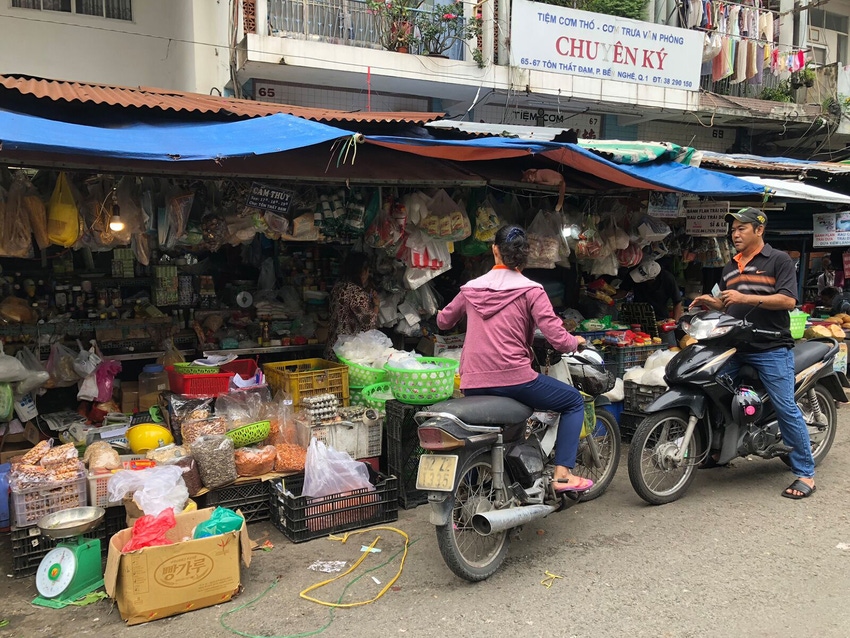Are Asian wet markets the source of COVID-19?
Tradition hindering improved food safety measures for Asian wet markets.
August 9, 2020

Well, maybe. And that is about as far out on the plank that I am going to go today.
The animal rights groups took turns blaming modern animal husbandry practices and then inhumane handling for COVID-19, but I don’t think anyone would call Wuhan’s animal husbandry practices “modern.”
So, then the finger pointing started blaming the wet markets and calling for bans on the same.
My old friend, and at one time boss, Dennis Erpelding (aka the Dinger) posted a blog on Feedstuffs and Facebook recently exploring the Asian world of wet markets.
It is a good read and explains very well why we cannot ban wet markets without increasing food insecurity big time in Asia.
He explained the lack of refrigeration and therefore the need for access to nearby wet markets for daily shopping. Then there are the issues of lack of modern transportation, lack of funds to stock up for a week and the paucity of supermarkets.
He is correct on all counts and shops at wet markets when he lives the half of his life that takes him to Thailand.
Several years ago, long after I had left the U.S. Department of Agriculture, I was asked by USAID (the United States Agency for International Development) if I would like to travel to Hanoi, Vietnam and investigate their food safety practices and then advise them on ways to increase their food safety.
Seemed tourism, mostly ex-U.S. military and spouses, was growing exponentially and they wanted to avoid the embarrassment of a foodborne illness outbreak among Americans.
I spent a week in Hanoi and the port of Haiphong, sometimes lecturing and sometimes seeking information.
I also got to see the Hanoi Hilton, Ho Chi Minh’s tomb and the skeletons of U.S.-downed bombers and fighter jets.
I toured a port of entry where U.S. meat and poultry were received, almost all intended for the high-end hotels where tourists would stay; certainly not for the locals.
When we went into the headquarters there was a motor scooter parked outside with a box that had a label that said: “U.S. poultry products, keep refrigerated at 40 degrees F or less.”
Two hours later the scooter was still there, the box was dripping, and the outdoor temperature was 103 degrees F.
I did not ask which hotel the box was intended for; I just did not eat any poultry products the rest of the week.
But back to the wet markets that the Dinger described.
Erpelding listed many exotics animals that are found in them, and suggested maybe they were the source of zoonotic diseases and should be banned.
I agree, the selection is much more varied than you and I would see at a Kroger’s or Whole Foods, but the mainstay for protein appeared to me to be pork.
I saw motor scooters with dead pigs strapped on the back heading for the wet markets.
I saw pork being processed behind the counters in the wet markets in open air environments.
I saw housewives pat down each cut of pork before a selection was made; I had to ask why.
With no refrigeration available, the warmest cut of meat was the most recently slaughtered and processed, and therefore less time had passed for bacteria to multiply to a dangerous level.
The purchasers of pork understand this theory; warm is good.
The actual salmonella testing done on this product indicated numbers as high as a 50% contamination rate.
So now we have the housewife with a 50% chance of salmonella on her hands handling the fruits and vegetables next to determine freshness and ripeness; almost always in that order, meat first, then veggies.
My suggestion to the Vietnam officials was to rearrange the order of the food stalls, putting fruits and vegetable, many of which cannot be cooked to kill pathogens, at the start of the wet market, followed by fish, eels and other exotics, then maybe the live poultry and put the raw pork last.
I was told that would not be possible; that these stalls had been in the same position for hundreds of years and passed along generation after generation in the same family.
Being the number one stall, usually pork, on the one-way walk down wet market lane was a source of great familial pride.
I commented, politely I think, that it was my understanding that a Communist country could tell their vendors what to do.
The response was something like this: “In almost all cases, yes; but not when it comes to the stall positioning in the wet markets. Thank you for coming, Dr. Raymond.”
About the Author(s)
You May Also Like



